
views
- A pregnant dog will start to gain weight around her stomach and waist before her pregnancy starts to show.
- A tell-tale sign that your dog might be pregnant is if her nipples “pink up” and become rosier and more pronounced.
- If your dog’s pregnant, she may start eating more, get tired easily, or crave more or less attention than usual.
- Always take your dog to the vet if you suspect pregnancy, as they can do an ultrasound or run a blood test to confirm or deny pregnancy.
Enlarged or discolored nipples

One of the earliest signs that your dog is pregnant is if she “pinks up.” A pregnant dog’s nipples will be rosier in color (more so than usual) and grow in size, so they’re more prominent. This usually indicates that the dog is about 2 to 3 weeks pregnant.
Weight gain
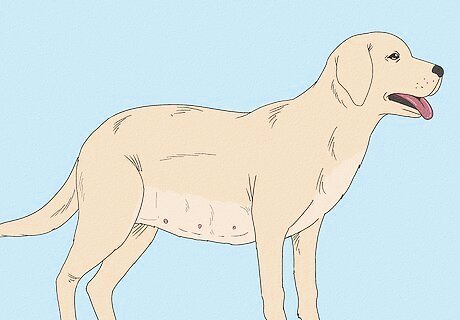
If your dog’s put on a bit of weight, it may be because she’s pregnant. Pregnant dogs tend to gain weight around their stomach and waist during the 2nd or 3rd week of pregnancy. This is completely normal—your dog is making more room for her puppies!
Swollen belly
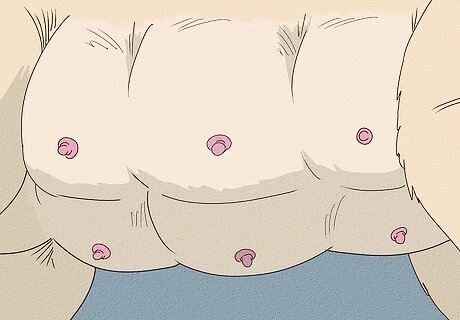
A rounder and firmer stomach could be a sign of pregnancy. Believe it or not, most dogs don’t “show” their pregnancy until the third half of pregnancy, which is 6 to 9 weeks since conception. If your dog’s stomach is more pronounced than usual, she’s most likely pregnant (especially if her nipples and mammary glands are swollen and plump). Try gently placing your hand on your dog’s belly. As the dog’s pregnancy progresses, there’s a greater chance you’ll be able to feel the puppies inside. The mammary glands produce the milk the puppies will drink, which causes a pregnant dog’s nipples to swell.
Increase in appetite
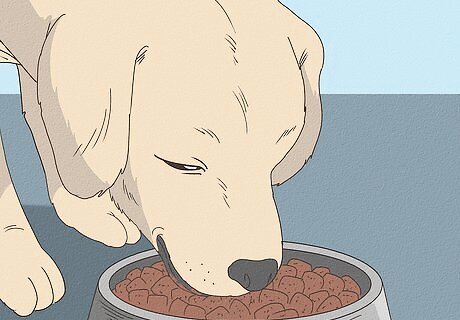
If your dog is pregnant, she’ll most likely eat more than usual. As her tummy grows, expect her to want to eat bigger meals and snack more throughout the day. After all, she has more mouths to feed! Talk to your veterinarian about how to care for your pregnant dog and when to increase her food rations, as additional calories could benefit her and the growing pups. Know that your dog will likely have a reduced appetite 12 to 24 hours before whelping or giving birth.
Tires easily

A sudden change in a dog’s energy levels could signify pregnancy. A pregnant dog may be drowsier or more lethargic than normal, especially as her belly grows. This is most noticeable if your dog is naturally full of energy. Take note if your dog would rather take an abnormal nap than play fetch like usual. This isn’t necessarily a sure sign of pregnancy, as many other underlying illnesses and conditions could cause changes in behavior. Always bring your dog to the vet, just to be sure.
More affectionate or irritable

Your dog’s behavior could change subtly or drastically if she’s pregnant. How a dog emotionally reacts to her pregnancy all depends on her personality. Some dogs become more affectionate and attention-seeking, while others shy away from pets and cuddles. So, notice if your dog suddenly wants to be pet all the time or hides in a room away from people and other animals. This change doesn’t automatically mean your dog is pregnant, but it could be a good indicator if she’s showing other pregnancy symptoms.
Nesting behavior

Like humans, a dog will start preparing for her baby’s arrival. Your dog may gather blankets, shred paper, or bunch together bedding or clothing to make a warm nest for her puppies. This behavior isn’t always observed, but if your dog does this out of the blue, she’s most likely about to whelp (give birth). Help your dog nest by providing her with a cardboard whelping box and plenty of extra blankets or towels. Talk to your veterinarian about helping your dog give birth and specify any health or behavioral concerns to get the most personalized care.
Physical examination
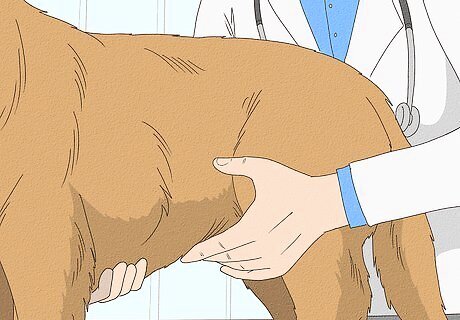
A veterinarian will most likely do a palpation test to check for pregnancy. This physical examination is painless, and only requires the veterinarian to feel the outside of your dog’s belly with their forefingers. This helps them examine the womb and feel the outline of the potential puppies. Palpation works best when the dog is between 3 and 4 weeks pregnant, as the embryonic vesicles can be easily felt. If the veterinarian feels anything, they’ll move on to an ultrasound or X-ray test to ensure they’re feeling fetuses rather than feces.
Hormone test

A veterinarian can take your dog’s blood to run a pregnancy hormone test. With this test, they’re looking for the hormone relaxin, which is generally present during the 4th week of pregnancy. If relaxin is present, your dog is definitely pregnant. A relaxin hormone test is often used to decipher pseudo pregnancies from real pregnancies, as a dog won't produce the hormone unless she’s actually pregnant.
Ultrasound

If pregnancy is suspected, a veterinarian will perform an ultrasound. With this, they can listen for heartbeats and count how many puppies there are (just like a human ultrasound). This is a sure way to confirm pregnancy in your dog, as long as she’s 2 or more weeks pregnant. Heartbeats are usually heard within 3 weeks of pregnancy. Counting the number of puppies or fetuses can sometimes be difficult, as they often like to hide behind their siblings. The vet may need to shave your dog’s belly fur if she’s extra fluffy. Some dogs may need to be sedated for an ultrasound, especially those that get anxious at the vet’s.
X-ray
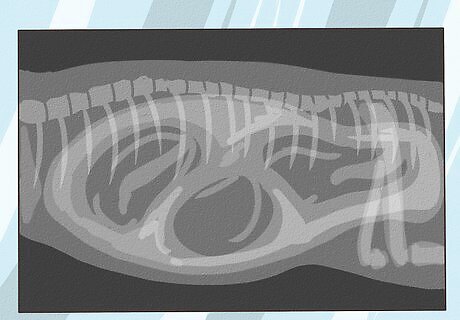
An X-ray of your dog’s stomach can help veterinarians count the number of puppies. With ultrasounds being the main test for dog pregnancies these days, an X-ray is only used in cases where the exact number of puppies needs to be known or there are suspected complications. If you have a smaller dog, the veterinarian may take an X-ray to calculate the size of the puppies to determine whether a natural birth or c-section is the safest option.




















Comments
0 comment